Bài giảng Phương pháp giảng dạy Tiếng Anh - Chapter 3: How to manage teaching & learning
1. Teacher’s physical presence
in class
Proximity:
- short distance: Ss uncomfortable
- long distance = coldness
Teachers should consider how close
they want to be to Ss
Appropriacy:
Deciding how closely teachers should work
with SsMovement
- Teacher’s movement: retaining Ss’ interest
- How much? Depending teacher’s personal style
- Motionless teachers bore Ss.
Contact: helping teachers to be aware of
- what Ss are doing
- how they are feeling
- the nature of contact varying
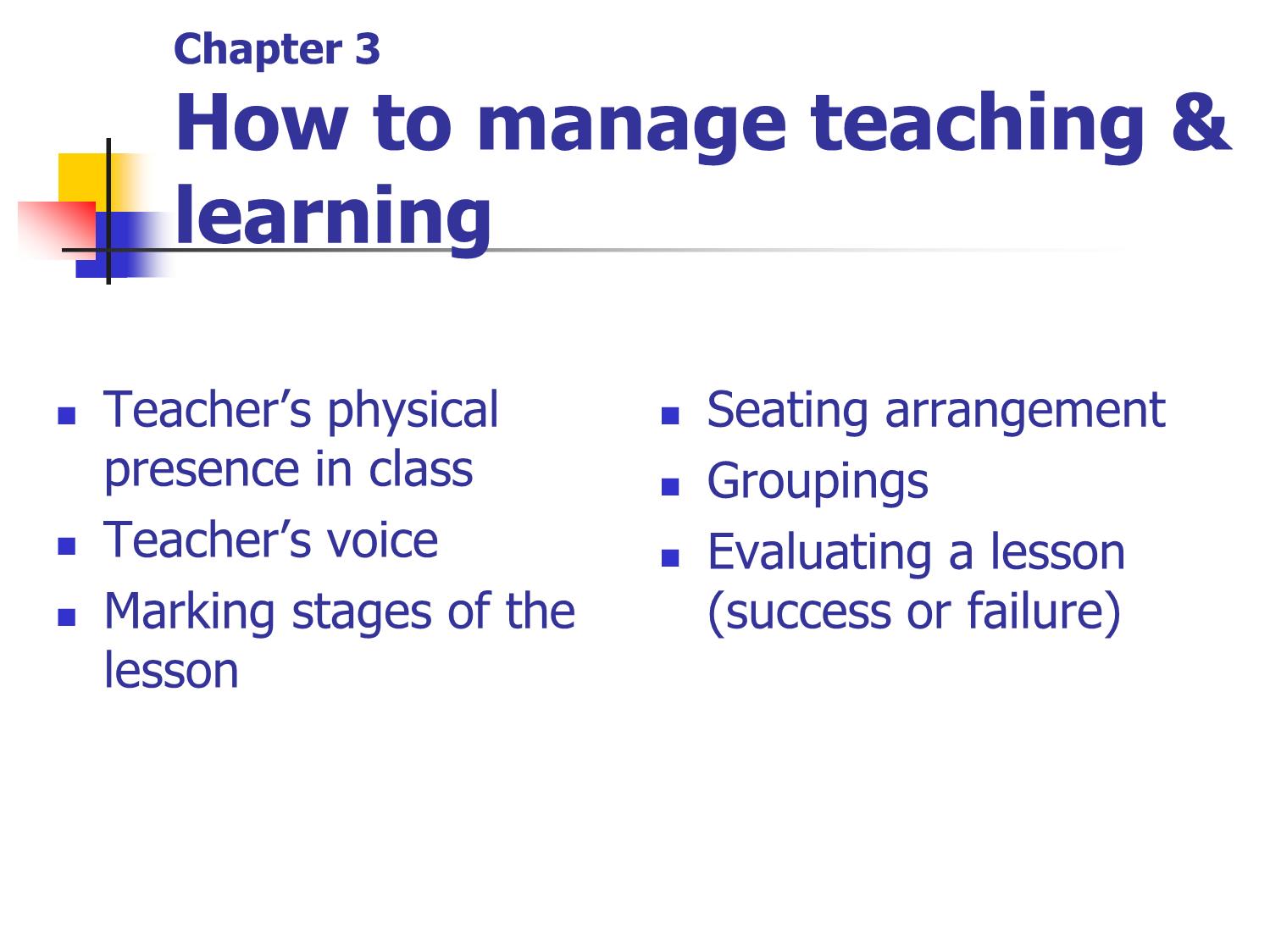
Trang 1
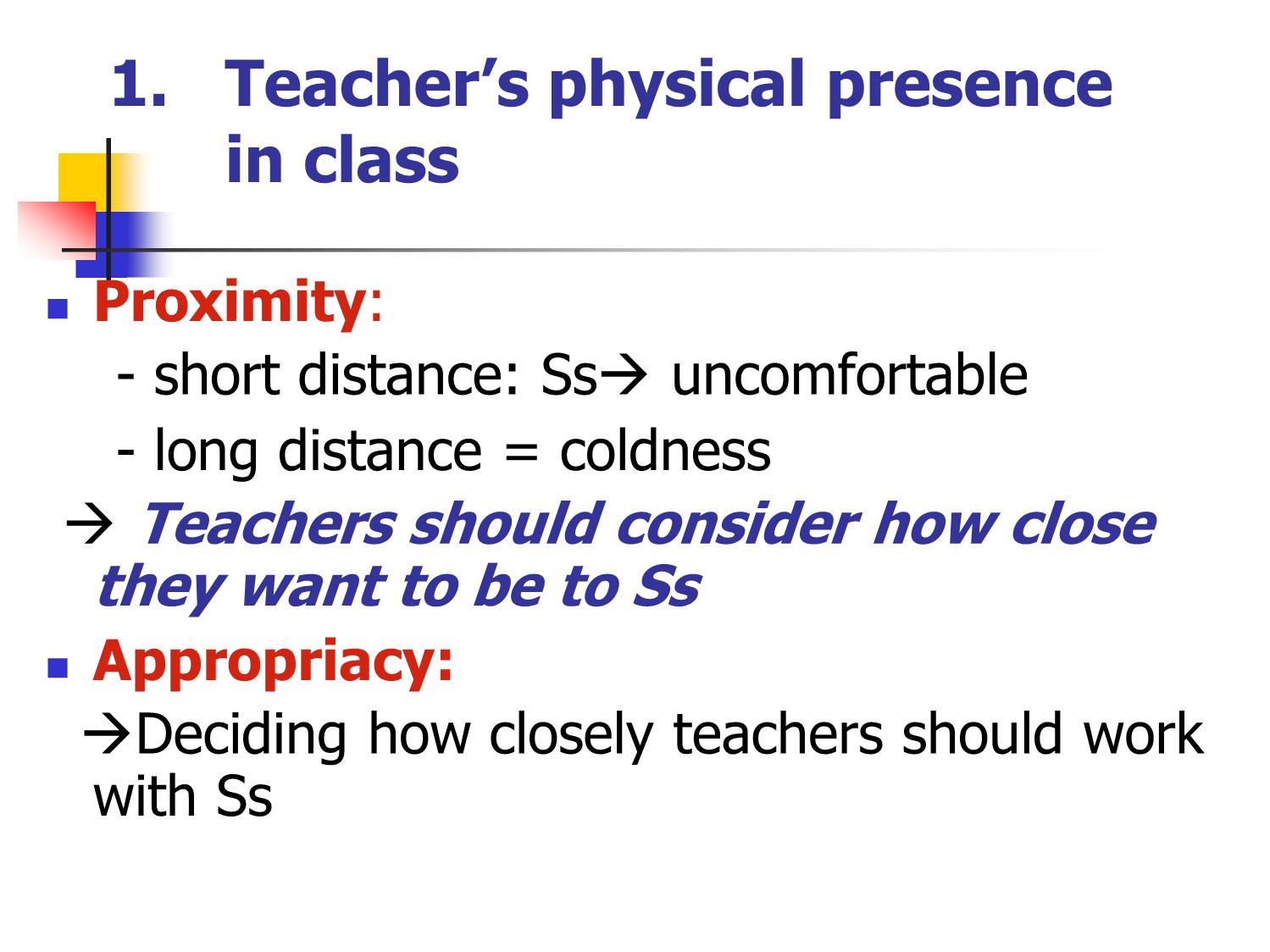
Trang 2
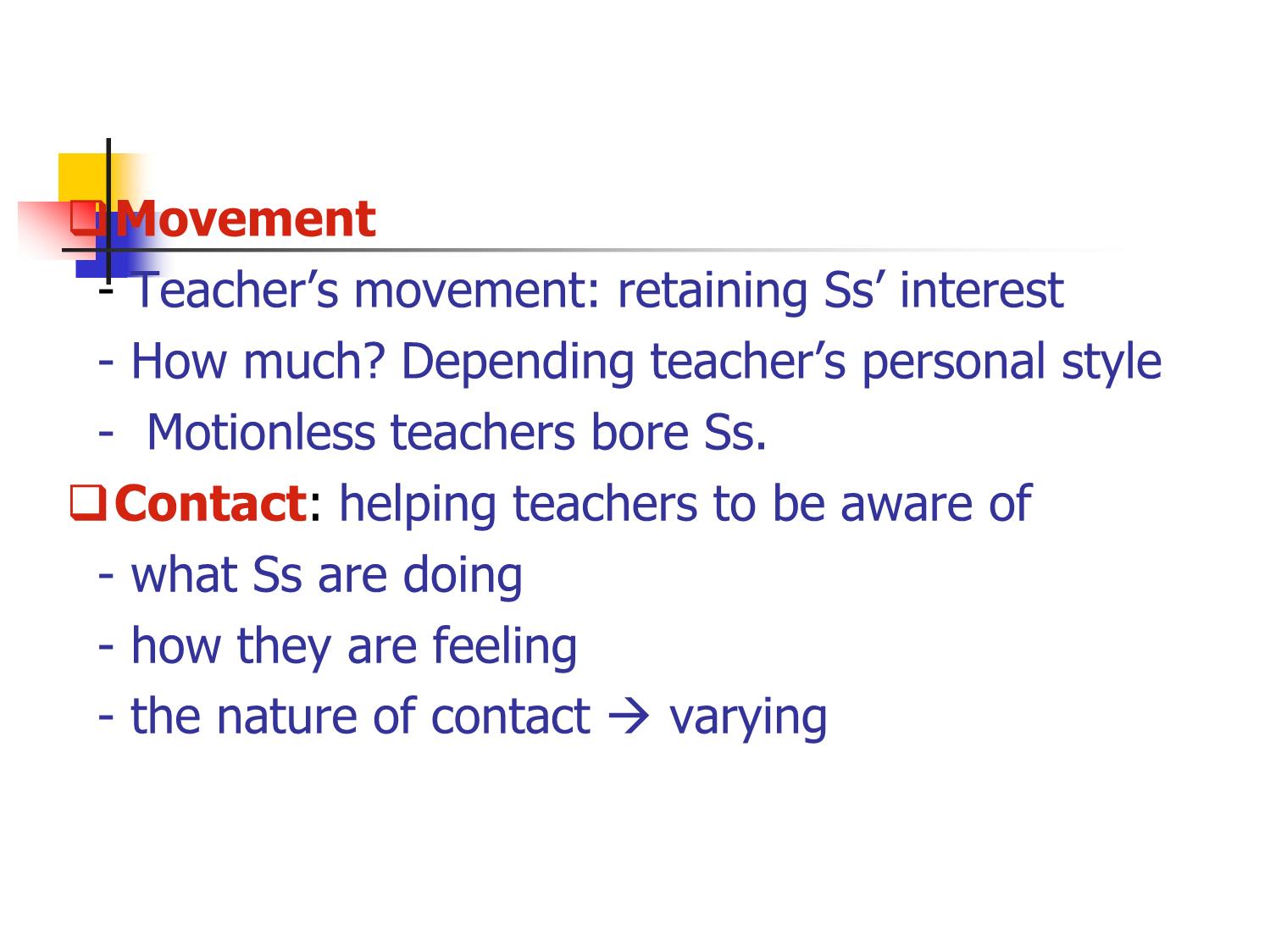
Trang 3
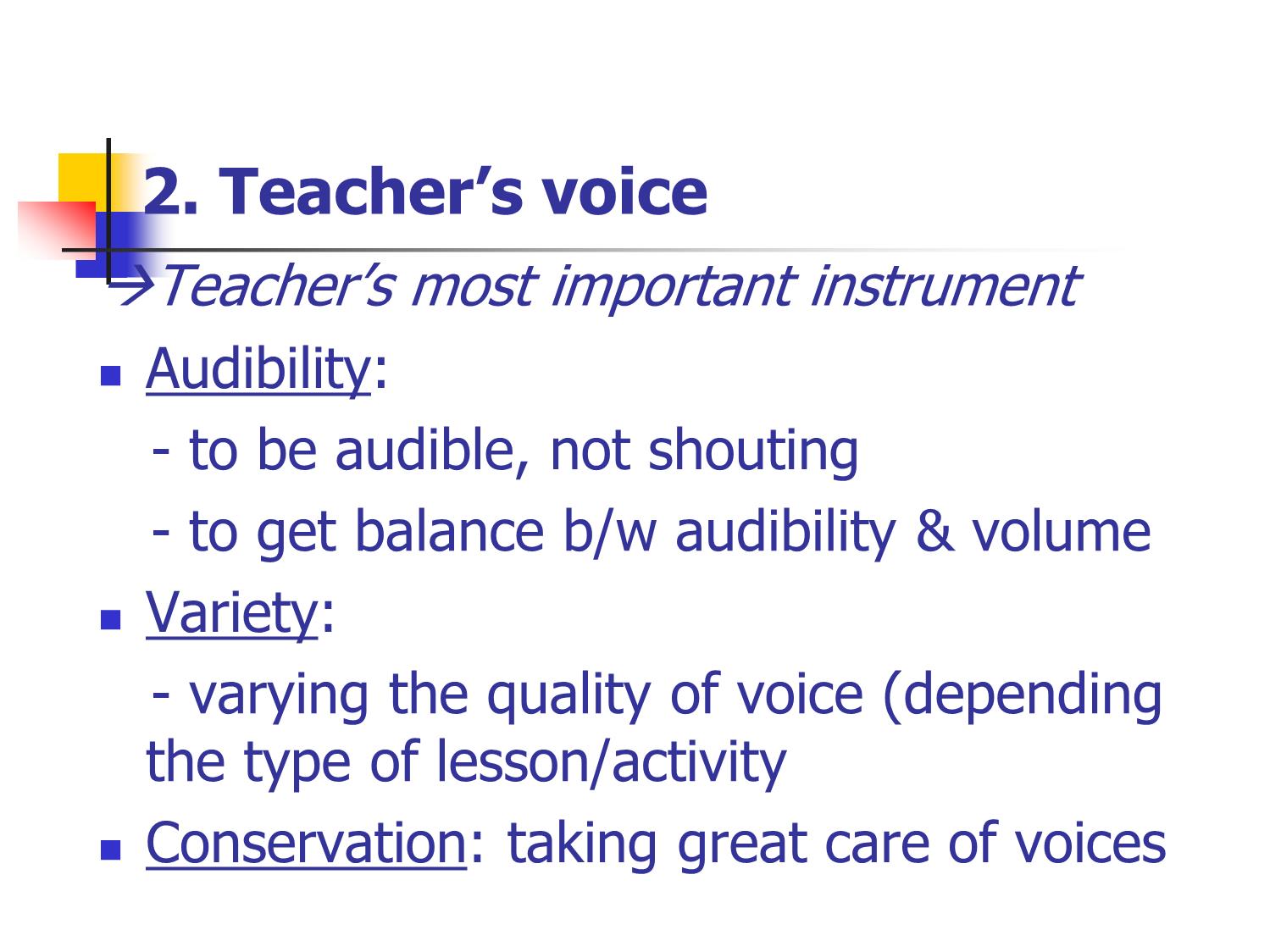
Trang 4
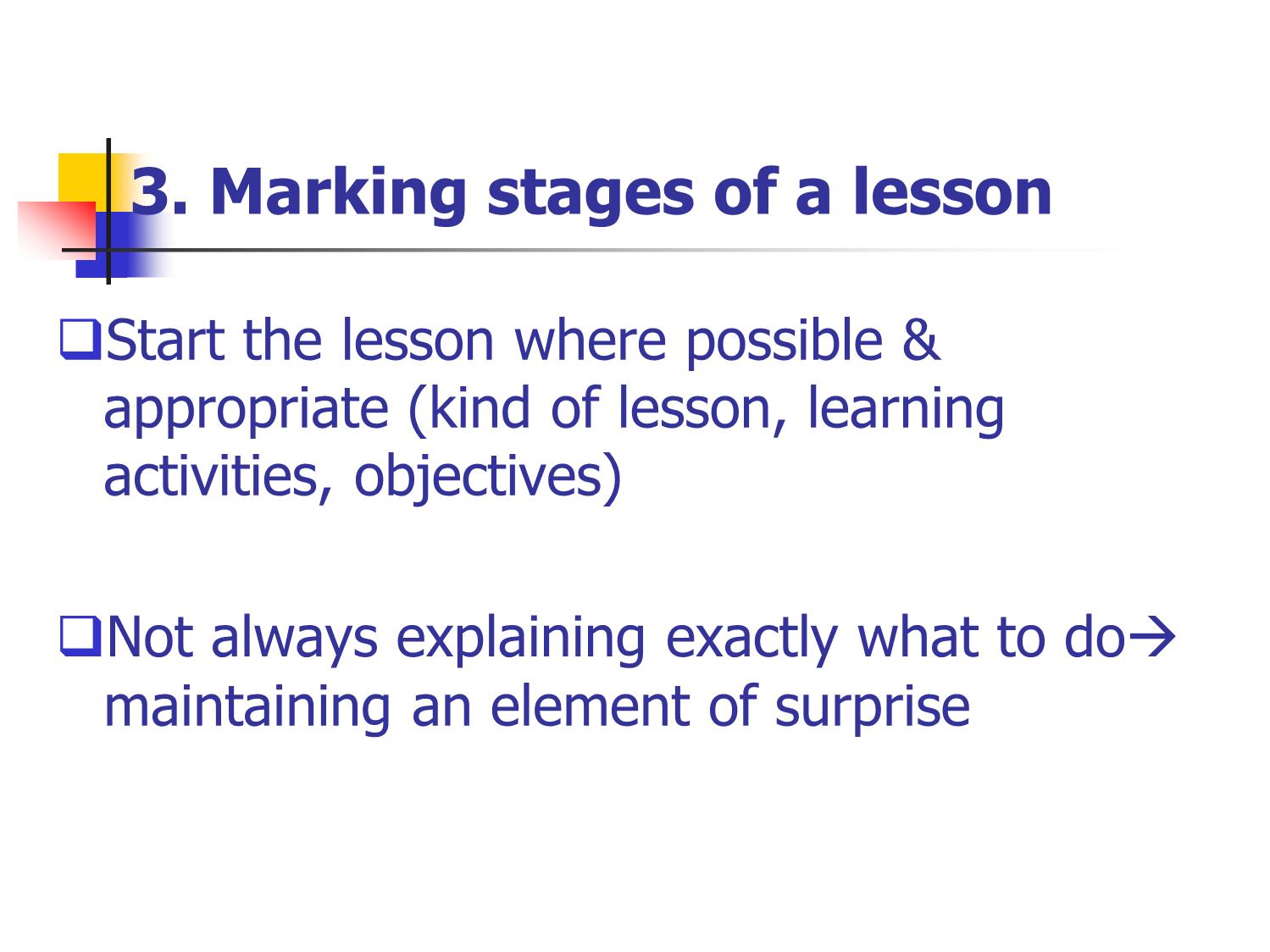
Trang 5
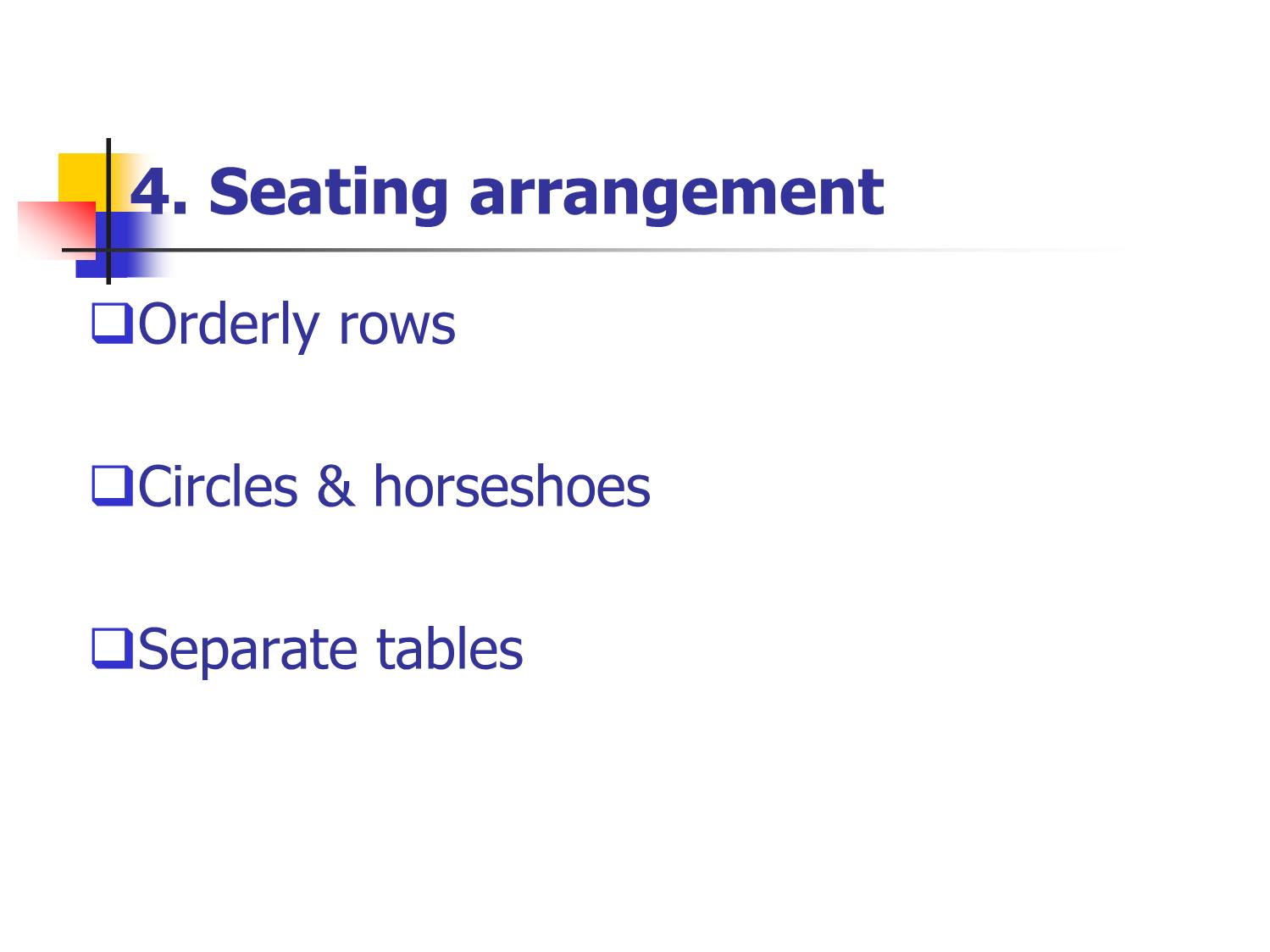
Trang 6
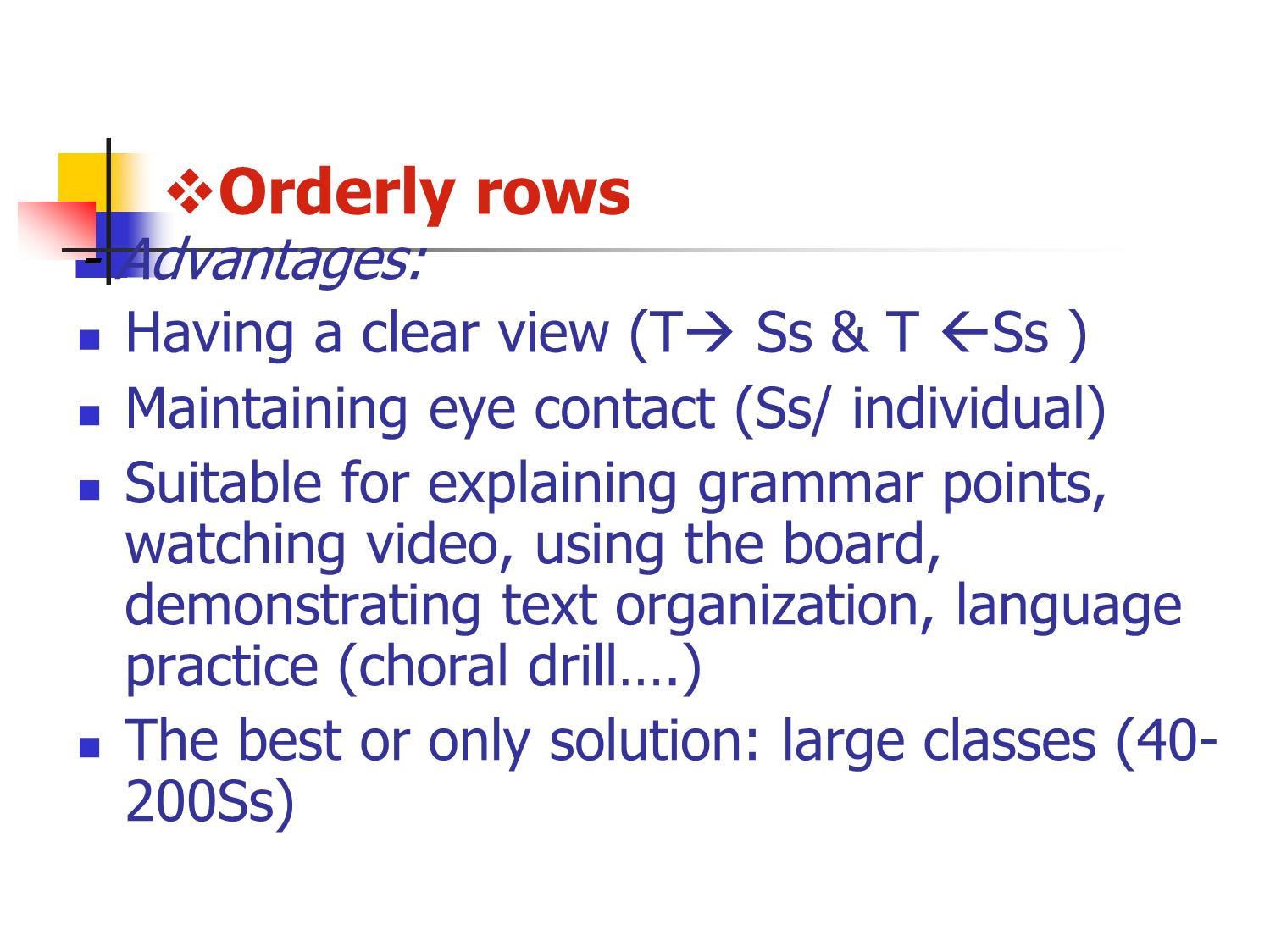
Trang 7
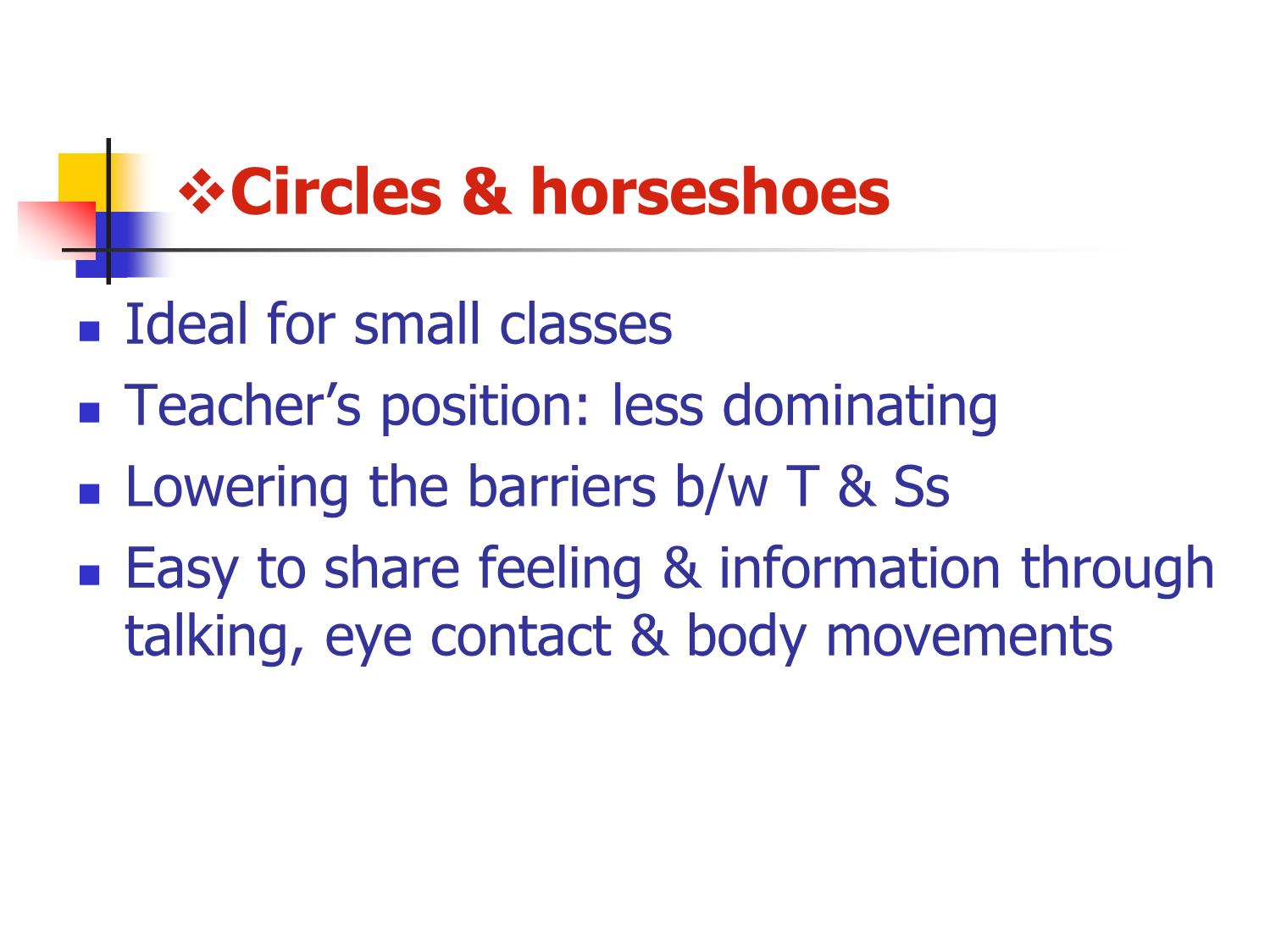
Trang 8
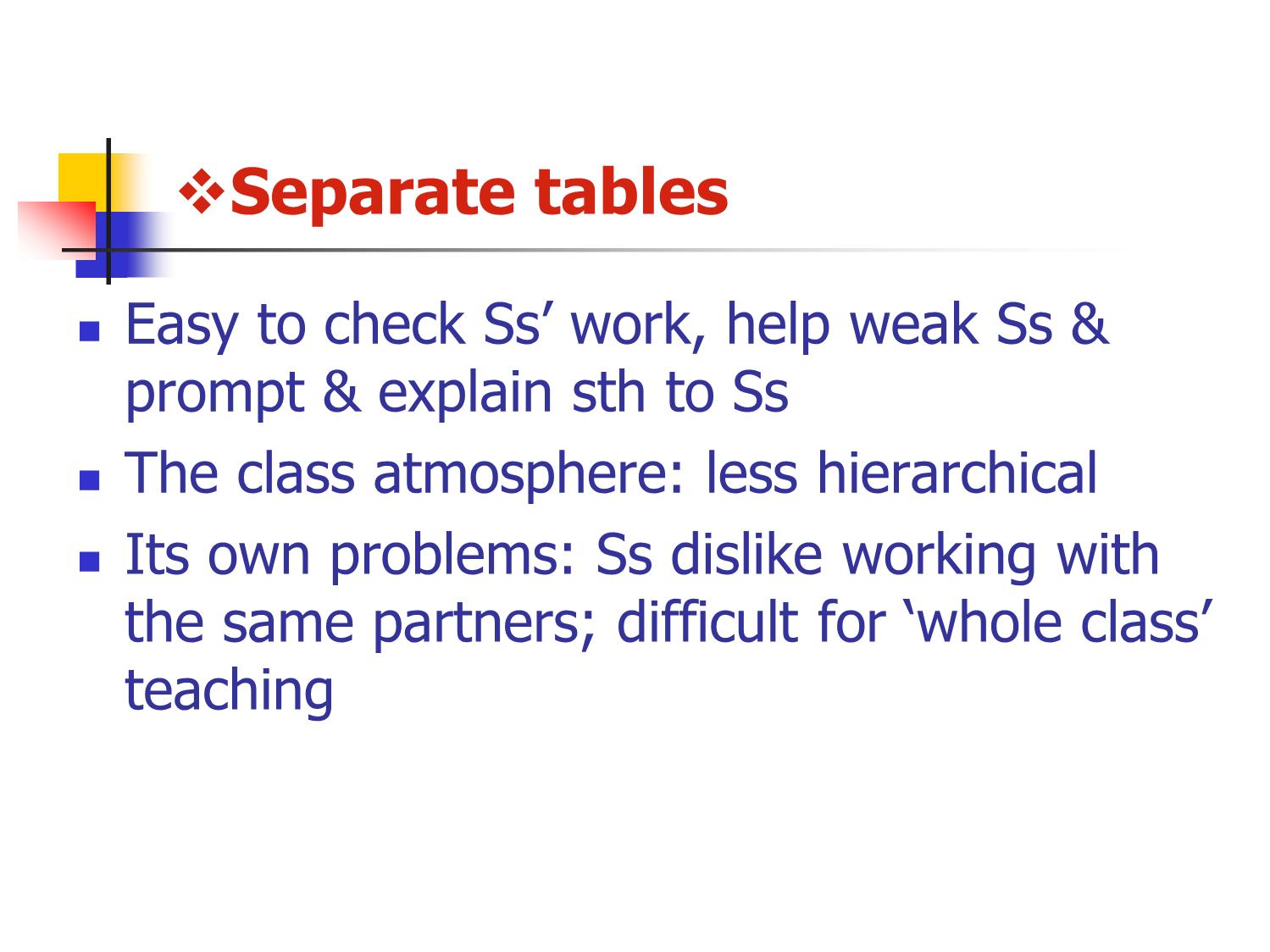
Trang 9
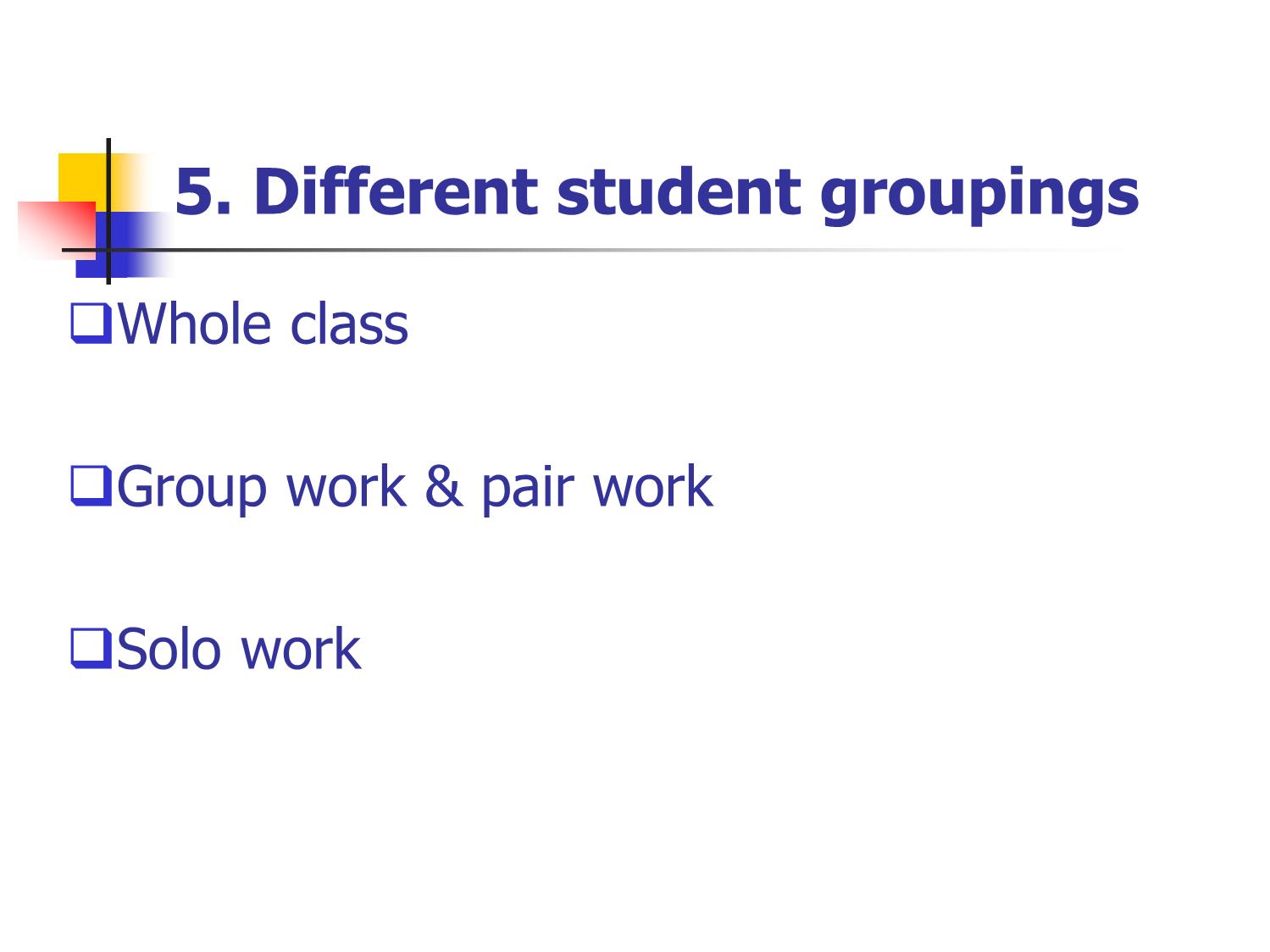
Trang 10
Tải về để xem bản đầy đủ
Bạn đang xem 10 trang mẫu của tài liệu "Bài giảng Phương pháp giảng dạy Tiếng Anh - Chapter 3: How to manage teaching & learning", để tải tài liệu gốc về máy hãy click vào nút Download ở trên
Tóm tắt nội dung tài liệu: Bài giảng Phương pháp giảng dạy Tiếng Anh - Chapter 3: How to manage teaching & learning
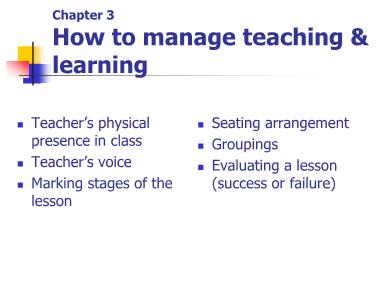
Chapter 3 How to manage teaching & learning Teacher’s physical presence in class Teacher’s voice Marking stages of the lesson Seating arrangement Groupings Evaluating a lesson (success or failure) 1. Teacher’s physical presence in class Proximity: - short distance: Ss uncomfortable - long distance = coldness Teachers should consider how close they want to be to Ss Appropriacy: Deciding how closely teachers should work with Ss Movement - Teacher’s movement: retaining Ss’ interest - How much? Depending teacher’s personal style - Motionless teachers bore Ss. Contact: helping teachers to be aware of - what Ss are doing - how they are feeling - the nature of contact varying 2. Teacher’s voice Teacher’s most important instrument Audibility: - to be audible, not shouting - to get balance b/w audibility & volume Variety: - varying the quality of voice (depending the type of lesson/activity Conservation: taking great care of voices 3. Marking stages of a lesson Start the lesson where possible & appropriate (kind of lesson, learning activities, objectives) Not always explaining exactly what to do maintaining an element of surprise 4. Seating arrangement Orderly rows Circles & horseshoes Separate tables Orderly rows - Advantages: Having a clear view (T Ss & T Ss ) Maintaining eye contact (Ss/ individual) Suitable for explaining grammar points, watching video, using the board, demonstrating text organization, language practice (choral drill.) The best or only solution: large classes (40- 200Ss) Circles & horseshoes Ideal for small classes Teacher’s position: less dominating Lowering the barriers b/w T & Ss Easy to share feeling & information through talking, eye contact & body movements Separate tables Easy to check Ss’ work, help weak Ss & prompt & explain sth to Ss The class atmosphere: less hierarchical Its own problems: Ss dislike working with the same partners; difficult for ‘whole class’ teaching 5. Different student groupings Whole class Group work & pair work Solo work Whole class The best type of classroom organization Classroom activities: - choral drill (structural drill) - introducing the new lesson - checking Ss’ reading tasks after pair work or group work Group work & pair work Giving Ss chances for greater independence (making learning decision, sharing responsibilities) Giving teachers opportunities to work with individual Ss Tasks for group work: discussing a topic, doing a role play, solving a problem Problems of group work Some Ss don’t like working with partners Strong Ss dominate # others : silent Encouraging Ss to be more descruptive Ss with the same L1: reverting to their L1 if the teacher is not working with them Solo work Allowing Ss to work at their own speed, thinking time & to be individuals Relaxing & considering their own needs & progress pair work, group work or solo work depending teacher’s style & Ss’ preference 6. Evaluating the success or failure of the lesson Getting feedback from Ss by asking some simple questions Inviting colleagues to observe & make suggestions (the lesson is videoed) Homework assignment, speaking activities (observing/scoring Ss’participation, progress tests in class) Activity 1: Choose appro. situations for the behaviors below of the teacher the teacher shouts. the teacher is in front of the class. the teacher is at the back of the class. the teacher is sitting on the floor. the teacher is ‘sitting’ on the table round which four students are working. Activity 2: Choose the most suitable interaction patterns for the activities below Learners do an information-gap with two sets of information. Learners write their own stories. Learners take part in an oral drill. Learners decide together how to report their conclusions to the rest of the class. Learners do a written test. Activity 3:What is the best seating arrangement for each situation below. Students are designing an advertisement in groups. You want to explain a grammar point. You have some reading tasks in a class of over 40 learners. In your class of 16 students, you want them to work in pairs.
File đính kèm:
 bai_giang_phuong_phap_giang_day_tieng_anh_chapter_3_how_to_m.pdf
bai_giang_phuong_phap_giang_day_tieng_anh_chapter_3_how_to_m.pdf

